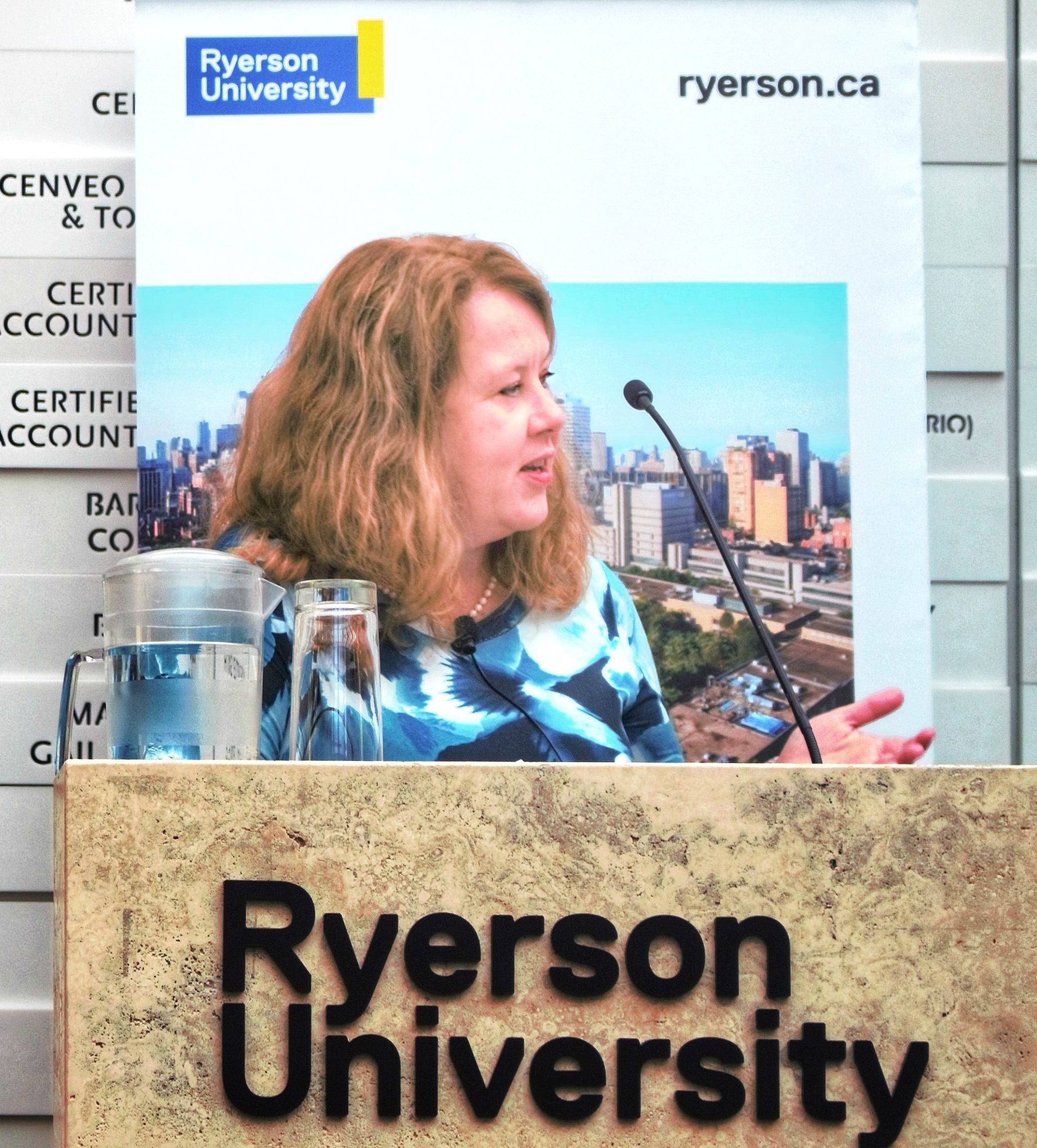By ATARA SHIELDS
Special to the RJRC

Journalists’ tendency to report on religion in the context of war and conflict means society isn’t benefiting from an informed discussion about religious beliefs in general, says Ryerson journalism professor Joyce Smith.
News stories are an important way for Canadians to learn about their own traditions and those outside of their own experiences, Smith said during The Many Gods of Canada: Religion, Secularism and Public Policy, an Oct. 19 symposium at Ryerson University. The problem, she added, is that “at the moment, religion is only covered through the lens of something else.”
“We never get the chance to hear stories about religion on its own terms.”
Smith, whose research examines how religion is represented in the mainstream media, said members of the public who rely on the media for information about religion are more likely to associate religion-centred stories and religion itself with conflict if they are fed a steady – and limited – diet of those sorts of stories.
What’s needed, she said, is more coverage “that will help give people a sense of what religious belief looks like before it is in a conflict situation.” Religion beat reporters used to provide this sort of reporting, she said, and in doing so, they provided a more comprehensive examination of religious issues. They also shaped the work of other beat reporters by, for instance, helping them understand the cultural practices of sources they are about to interview.
Smith compared the work of a dedicated religion beat reporter to the practice of rediscovering the “lost rivers” of Toronto that continue to flow even though they have been buried under Toronto streets for more than a century. Some of the rivers are now little more than sewers. Others, however, are beginning to be recognized today through a process called “day-lighting” where they are dug up and exist above ground once again.
Journalism, she said, performs a similar function: “First, reporting provides archival treasures. It is possible to go back and envision past ideas and practices if they had been captured accurately. But day-lighting also means acknowledging traditions that for a variety of reasons have been marginalized or have been subjected at times to attempts at extinction.”
In response to a question from the audience about journalists’ “poisonous” coverage of minorities and why it has not “stirred the conscience” of the media and the public, Smith maintained that this kind of reporting comes from a place of ignorance as opposed to malice.
She pointed to journalists’ response to calls from the Truth and Reconciliation Commission for more coverage of Indigenous culture, calling it “heartening.”
Smith, whose teaching in the School of Journalism includes a course on covering religion and another on reporting on Indigenous issues, said she hopes that even if her students do not become specialist reporters, they will enter the news industry better equipped to tackle these complex matters when they arise in the context of other types of stories.
“At least when these students go out, if they’re covering sports or business or whatever else, they’ll at least have their antennae up and they’ll have a better sense of these issues.”
